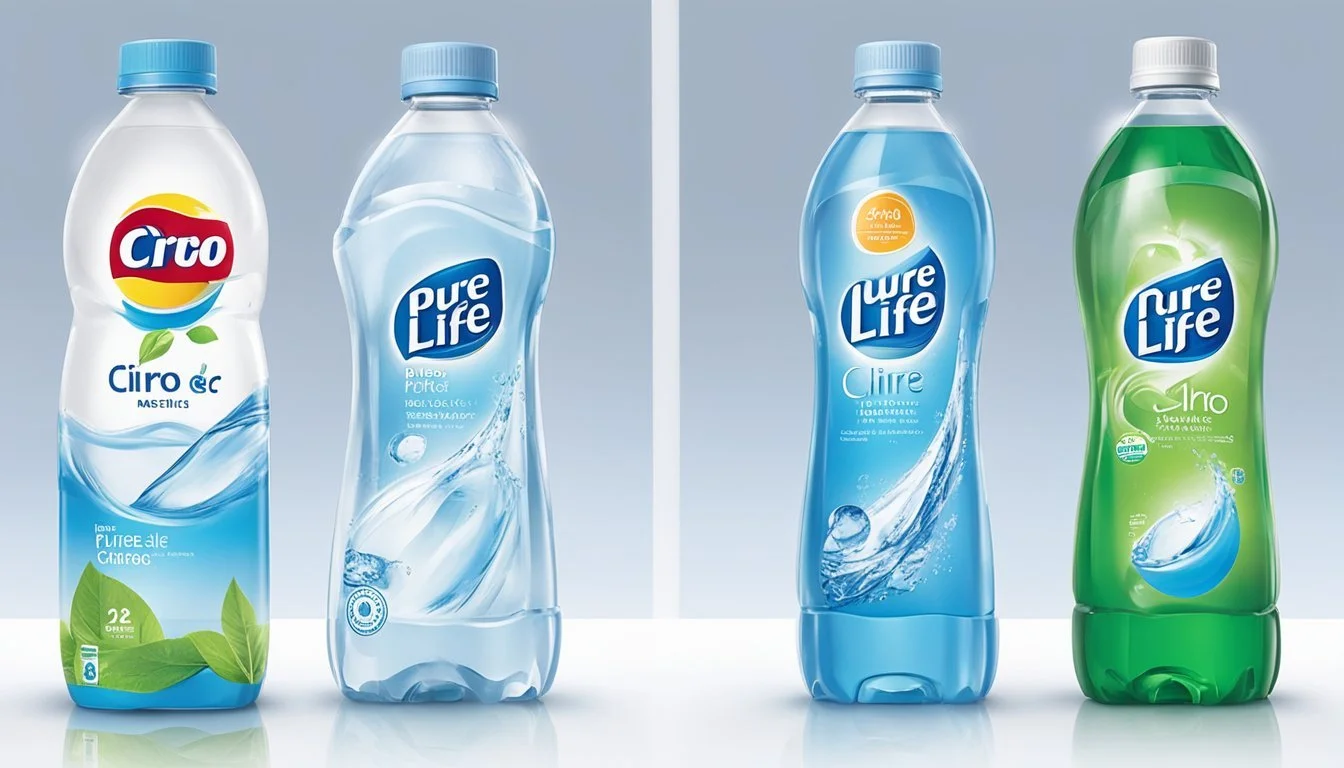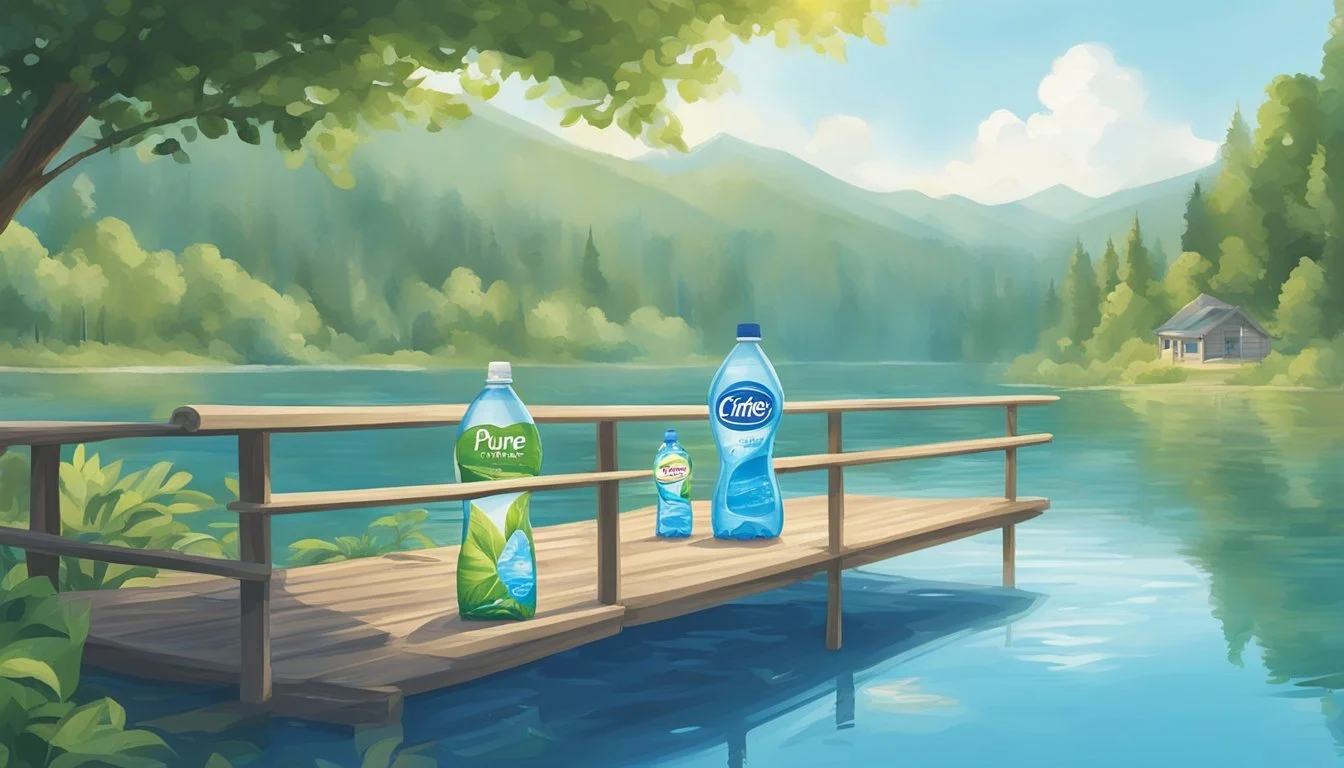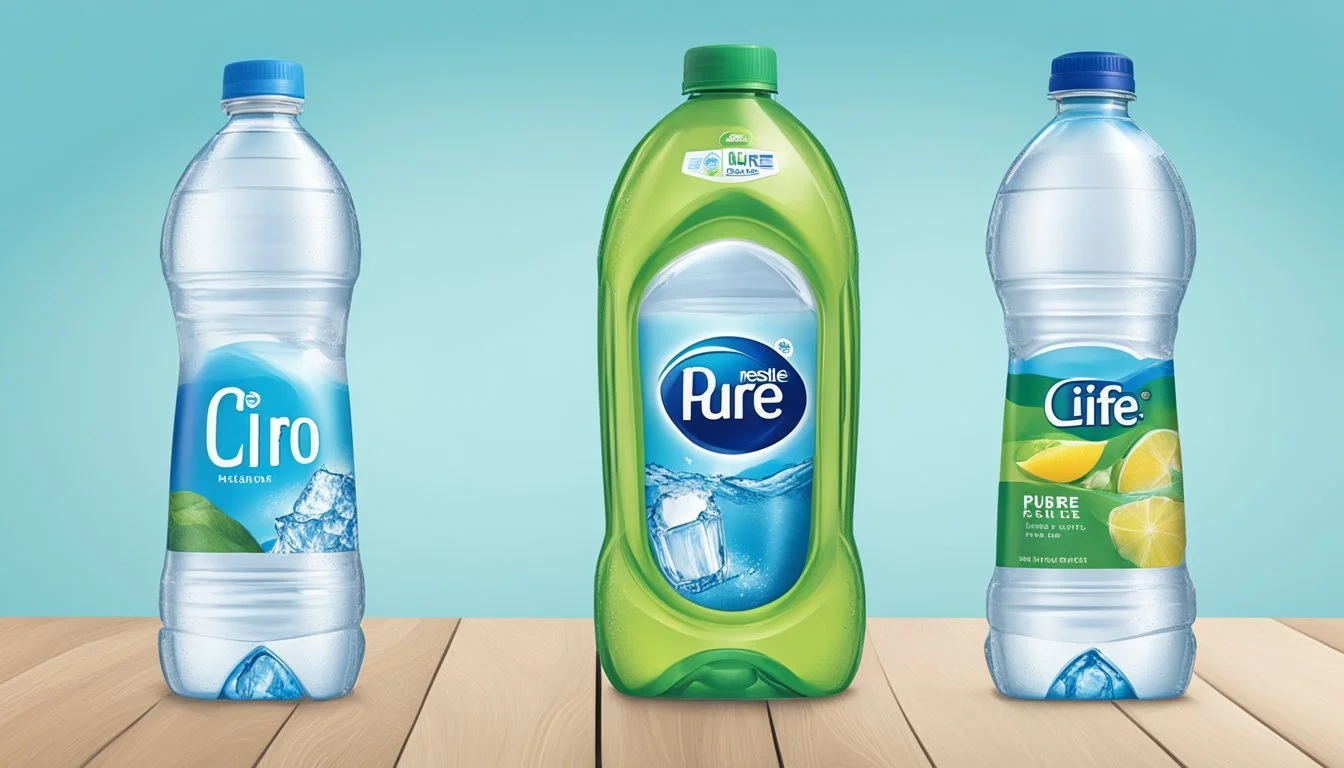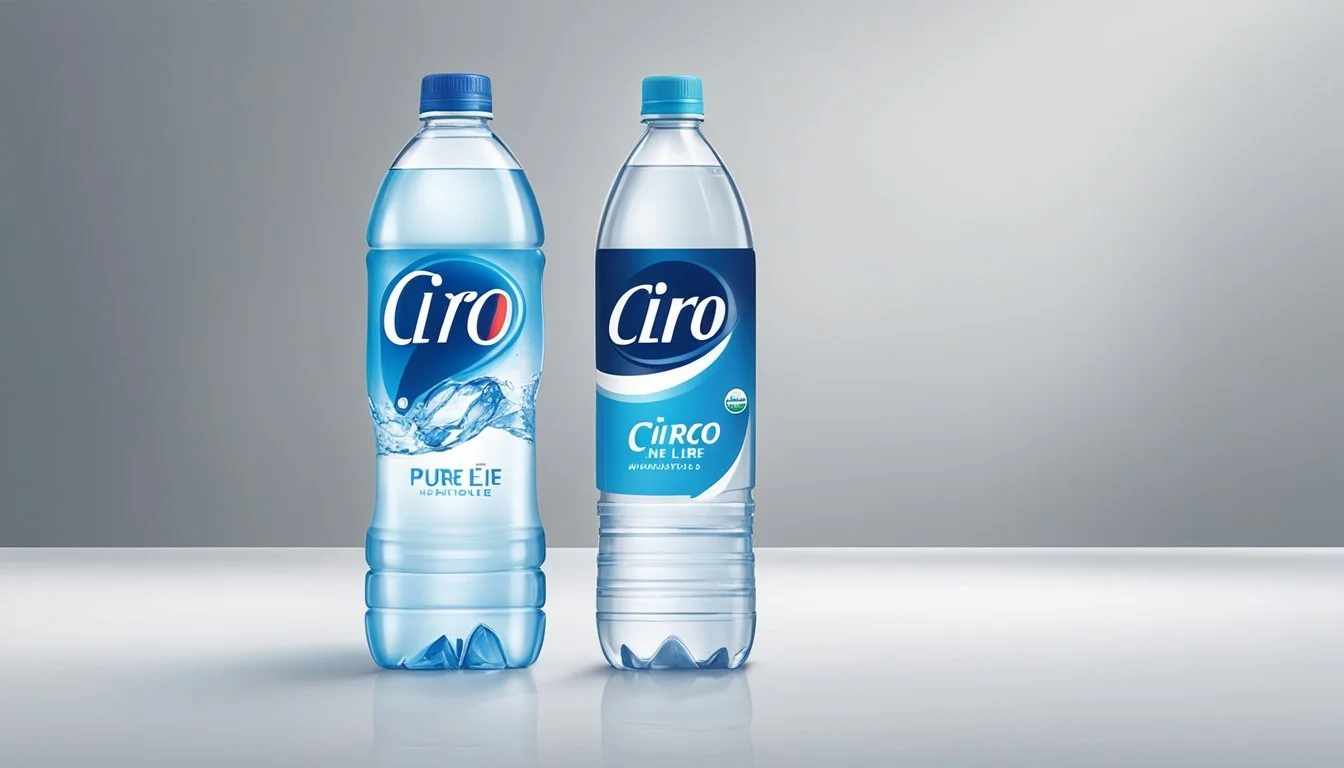Nestlé Pure Life vs. Cirro
A Detailed Bottled Water Comparison
Choosing the right bottled water can be more complicated than it seems. In this article, the focus is on comparing Nestlé Pure Life and Cirro to determine which one stands out in terms of taste, quality, and overall value. While both brands have their loyal followers, differences in their source and filtration processes may sway your decision.
Nestlé Pure Life, a popular brand owned by the global giant Nestlé, emphasizes a stringent filtration process to ensure clean and safe drinking water. On the other hand, Cirro is known for its more premium, naturally-sourced water, extracted from natural springs. The distinct methods used by these two brands result in varying tastes and qualities that appeal to different preferences.
For those who prioritize taste, it is essential to consider the unique characteristics of each brand. Nestlé Pure Life is often noted for its neutral, crisp flavor, making it a versatile choice for everyday hydration. Cirro, however, offers a slightly more mineral-rich profile, which might be preferred by those looking for a natural taste. Ultimately, the choice between Nestlé Pure Life and Cirro depends on personal taste preferences and priorities regarding water sourcing and filtration methods.
Understanding Bottled Water
Bottled water is often preferred for its convenience and perceived purity. This section explores what defines bottled water and the various types available, focusing on their sources and processing methods.
Defining Bottled Water
Bottled water is water that is sealed in bottles for human consumption. It originates from diverse sources including natural springs, aquifers, and groundwater.
There are various regulatory standards to ensure its safety. For instance, spring water must come from an underground formation and flow naturally to the surface.
Quality and mineral content can differ largely depending on the source. Some bottled waters are rich in electrolytes and minerals while others have been extensively purified. Distilled water undergoes distillation, removing most impurities and minerals, making it less flavorful.
Types of Bottled Water
1. Spring Water: Originates from natural springs. Contains minerals beneficial for health.
2. Purified Water: Goes through processes like reverse osmosis, which removes most impurities. Generally tasteless due to the lack of minerals.
3. Mineral Water: Must contain a certain amount of mineral content, naturally derived from the source.
4. Distilled Water: Produced by boiling and condensing vapor. Free from minerals and impurities, making it extremely pure.
5. Alkaline Water: Processed to increase its pH level. Contains added electrolytes believed to offer various health benefits.
These types vary in how they're sourced and processed, influencing taste, health benefits, and environmental impact. For instance, spring and mineral waters usually have richer flavors due to their mineral content, while purified and distilled waters are often preferred for their lack of contaminants.
Comparative Analysis
Nestlé Pure Life and Cirro are compared based on taste profile, health implications, and pH levels to determine which bottled water stands out in these key areas.
Taste Profile
Nestlé Pure Life is known for its purified water, which undergoes a multi-step filtration process designed to provide a consistent taste. This rigorous purification aims to remove contaminants while maintaining a neutral flavor.
In contrast, Cirro sources its water from natural springs, which may result in a slightly more mineral-rich taste. The natural minerals can influence the flavor, giving it a subtle complexity. Consumers who prefer a more distinct natural taste may lean towards Cirro, while those who prioritize consistency might choose Nestlé Pure Life.
Health Implications
Health considerations include the water's content and any potential contaminants. Nestlé Pure Life runs multiple-stage filtration and quality checks to ensure it remains free from harmful substances like lead and arsenic. However, some reviews suggest it contains minimal amounts of sodium, sweeteners, and preservatives.
Cirro focuses on sourcing water from protected natural springs, which may naturally contain beneficial minerals. These minerals can provide added health benefits, though it's essential to verify the absence of contaminants. Given Cirro's commitment to natural processes, consumers seeking fewer additives may prefer it over Nestlé Pure Life.
PH Levels and Acid Balance
The pH level is crucial for understanding water's acidity or alkalinity. Nestlé Pure Life typically maintains a neutral pH level, around 7, due to its extensive purification process. This balance supports overall hydration without altering the body's natural pH levels.
Cirro, with its spring water origins, can exhibit slight variability in pH levels based on its mineral content. Spring water often leans slightly alkaline, which some believe provides better acid balance in the body. Those sensitive to pH differences might find Cirro's natural alkalinity more appealing.
In summary, while Nestlé Pure Life offers consistency and thorough purification, Cirro provides a natural taste with potential health benefits from its mineral content and slightly alkaline pH balance.
Branding and Reputation
The branding and reputation of Nestlé Pure Life and Cirro differ significantly, reflecting their distinct market strategies and consumer bases.
Market Positioning
Nestlé Pure Life is promoted as a reliable, purified water source. Nestlé's extensive market reach and recognition bolster its position as a leading brand in the bottled water industry. Nestlé owns numerous brands, which further enhances its market position.
Cirro focuses on premium quality and aims to attract health-conscious consumers. They emphasize the purity and natural sourcing of their water. This niche positioning allows Cirro to appeal to a segment of the market that prioritizes health and environmental sustainability.
Consumer Perception
Consumers perceive Nestlé Pure Life as dependable but also criticize it for being too commercialized. There is a notion that it lacks a distinct, exceptional quality. Some view Nestlé's reputation as mixed due to its significant corporate presence and concerns over transparency.
Cirro enjoys a positive reputation among its target audience, who value its dedication to purity and sustainability. The brand is seen as trustworthy and transparent about its sourcing and processing techniques. This positive perception helps Cirro maintain a loyal customer base and attract new, health-conscious consumers.
Sourcing and Purity
Nestlé Pure Life and Cirro both emphasize the importance of sourcing high-quality water and ensuring its purity through rigorous filtration processes. Their methods, while distinct in some aspects, aim to deliver clean and safe drinking water free from impurities.
Sourcing Methods
Nestlé Pure Life sources its water from multiple locations, including public water supplies and natural springs. The company relies on municipal water sources, which are then subjected to extensive purification processes.
Cirro, in contrast, often sources its water from aquifers and underground springs. These natural water reserves are known for their high mineral content and inherent purity.
Nestlé Pure Life's multi-source approach ensures a consistent supply, but it may vary in mineral content. Cirro's reliance on naturally occurring springs often results in a more uniform mineral profile, benefitting from mineral-rich environments like volcanic rock formations.
Filtration and Purity
Nestlé Pure Life employs a multi-step filtration process to ensure the water's purity. This includes microfiltration, reverse osmosis, and ozonation. These methods effectively remove impurities, such as microplastics and other contaminants, providing a consistent taste and quality.
Cirro undergoes a less intensive filtering process, focusing mainly on preserving the natural minerals present in the water.
Nestlé Pure Life’s processes impact the water's natural mineral content, often leading to a less distinctive flavor. Cirro prioritizes minimal processing to retain the water's natural essence, which can result in a more pronounced, minerally taste.
Both brands prioritize removing potentially harmful impurities, but their differing approaches cater to varying consumer preferences regarding taste and mineral content.
Environmental and Sustainability Concerns
When comparing Nestlé Pure Life and Cirro, important factors include their use of bottles and recycling practices, as well as their approaches to water source preservation. An in-depth look at these aspects reveals the environmental impact and sustainability efforts of each brand.
Bottles and Recycling
Nestlé Pure Life and Cirro utilize plastic water bottles, many of which are made from PET plastic, known for being lightweight and recyclable. Nestlé has invested in using recycled materials, aiming for their bottles to be made from 50% recycled PET by 2025. Cirro also stresses the importance of environmentally friendly packaging and strives for 100% recyclable bottles to reduce waste and the environmental footprint.
Both brands are committed to BPA-free packaging to ensure consumer safety. However, recycling rates can be problematic since not all consumers recycle properly. The impact of plastic water bottles on marine life and landfills continues to be a significant concern. Efforts are being made to improve recycling infrastructure and education to enhance the reuse of materials and decrease pollution.
Water Source Preservation
Preserving water sources is crucial for sustainability and the health of local ecosystems. Nestlé Pure Life sources water from natural springs and municipal supplies. They implement water stewardship programs to monitor and enhance the sustainability of these sources. This includes practices aimed at reducing water usage in the bottling process and supporting local water conservation initiatives.
Cirro focuses on sourcing water responsibly, ensuring minimal environmental disruption. They conduct regular assessments to ensure their practices do not deplete or contaminate local water sources. Both brands highlight transparency in their sourcing and production methods to promote trust and accountability among consumers. They work towards balancing commercial interests with environmental stewardship to safeguard this precious resource.
Water Safety and Regulations
When comparing Nestlé Pure Life and Cirro, understanding water safety and regulations is crucial. This includes the rigorous standards each brand must meet to ensure the highest quality and safety.
Ensuring Water Quality
Water quality for bottled water is regulated by the FDA in the United States. Nestlé Pure Life and Cirro must comply with these stringent standards to guarantee consumer safety. The regulations cover source water quality, the treatment process, and bottled water itself.
Nestlé Pure Life often highlights that their single-serve bottles, made from PET plastic, do not contain Bisphenol-A (BPA). This ensures that harmful chemicals do not leach into the water.
Cirro also adheres to these standards, emphasizing their rigorous purification processes such as reverse osmosis. This ensures that contaminants are removed effectively, leaving water that is both safe and high quality.
Heavy Metals and Other Contaminants
Contaminants such as heavy metals can pose significant health risks. Nestlé Pure Life and Cirro are required to test and remove these substances to meet EPA and FDA safety standards.
Studies show that some bottled water may still contain trace amounts of heavy metals and other contaminants. This includes substances like caffeine, acetaminophen, fertilizers, and solvents.
Both brands maintain strict quality control procedures to minimize these contaminants. Nestlé Pure Life ensures their packaging and purification processes eliminate harmful chemicals. Cirro uses advanced treatment methods to adhere to the highest safety standards, providing water that is safe for consumers.
Additional Ingredients and Mineral Content
Nestlé Pure Life and Cirro offer distinct approaches to mineral content and added ingredients, each impacting taste and health benefits. A comparison of their added minerals and natural versus added electrolytes reveals key differences.
Added Minerals for Enhanced Taste
Nestlé Pure Life is known for its process of adding minerals to enhance flavor. This process includes the addition of sodium bicarbonate, calcium chloride, and magnesium sulfate. These minerals not only improve taste but also contribute to the daily mineral intake.
Calcium chloride and magnesium sulfate are particularly beneficial. Calcium chloride helps in maintaining strong bones and teeth while magnesium sulfate supports muscle function and overall energy levels. This makes Nestlé Pure Life a practical choice for mineral supplementation, especially for those who have specific dietary requirements for these nutrients.
In contrast, Cirro, being a natural spring water, typically does not add minerals artificially. The natural minerals are derived from the surrounding geology where the water is collected. This natural sourcing provides a different taste profile, often perceived as more authentic and crisp.
Natural vs. Added Electrolytes
Electrolytes such as potassium, calcium, and magnesium play a crucial role in maintaining body hydration and nerve function. Nestlé Pure Life includes added electrolytes that enhance the water’s hydrating properties. These added electrolytes balance flavor and provide consistent taste across different batches.
Cirro relies on its natural spring source for electrolyte content. The minerals found naturally in the spring water include calcium, magnesium, and potassium, derived from the earth's layers through which the water travels. This can lead to slight variations in taste and mineral content depending on the specific spring source.
Both brands offer health benefits through their unique approaches. Natural spring water like Cirro may appeal to those seeking minimal processing and naturally occurring minerals. On the other hand, the standardized and controlled addition of minerals in Nestlé Pure Life provides predictable taste and supplementation, advantageous for individuals monitoring specific electrolyte intake.
Product Varieties and Special Features
Nestlé Pure Life and Cirro both offer diverse product ranges aimed at meeting various consumer needs. They differentiate themselves through their offerings of flavored and functional waters, as well as through innovative packaging designed for convenience and usability.
Flavored and Functional Waters
Nestlé Pure Life extends beyond standard bottled water by offering flavored and functional options. Their flavored waters come in a variety of tastes such as lemon, raspberry, and lime. Functional waters include those infused with electrolytes and minerals for enhanced hydration.
Cirro also taps into the flavored and functional water market, with selections aimed to appeal to health-conscious consumers. Their offerings include varieties fortified with vitamins and antioxidants, designed to support overall wellness. They focus on natural flavors without added sugars or artificial ingredients.
Innovative Packaging and Convenience
In terms of packaging, Nestlé Pure Life focuses on convenience and eco-friendliness. They offer bottles in multiple sizes, ranging from small, easy-to-carry bottles for on-the-go hydration to larger family-sized options. Furthermore, they incorporate recycled materials in their packaging to address environmental concerns.
Cirro also prioritizes convenience. They offer unique features such as resealable caps and ergonomic designs that make the bottles easy to handle. Additionally, some of their packages include multipacks with a mix of flavors, catering to consumers who enjoy variety.
Consumer Choice and Recommendations
When choosing between Nestlé Pure Life and Cirro bottled waters, factors such as personal preference, taste, and price are critical in finding the best option for individual needs. Quality and cost also play significant roles in consumer decisions.
Selecting the Right Water for Your Needs
Consumers often consider taste and purity as primary criteria when selecting bottled water. Nestlé Pure Life is known for its clean taste but has faced criticism for sourcing from municipal supplies rather than springs. On the other hand, Cirro, a less prominent brand, emphasizes spring water origins, which may appeal to those seeking a more natural water source.
Another consideration is the availability and packaging. Nestlé Pure Life is widely accessible and comes in various sizes, making it convenient for different uses. Cirro may have more limited availability but could attract those looking for niche or regional brands. Analyzing customer reviews and ratings can also offer insights into daily experiences with each brand.
Cost vs. Quality Trade-Offs
Price is a significant factor in the choice between Nestlé Pure Life and Cirro. Nestlé Pure Life tends to be more affordable, which can attract budget-conscious consumers. This affordability might come at the expense of perceived quality, especially with the controversy around its water sources.
Cirro may be priced higher due to its spring water origin, catering to consumers who prioritize quality over cost. Shoppers must weigh whether the potential benefits of higher quality justify the extra expense.
Budget constraints often dictate consumer choices, but understanding the trade-offs between cost and quality can guide a more informed decision. It’s helpful to compare prices across different retailers and take advantage of promotions or bulk buying options to optimize value.
More About Nestlé Pure Life
Acqua Panna vs Nestle Pure Life: Which Bottled Water is Better?
Aquafina vs Nestle Pure Life: Which Bottled Water is Better?
Arrowhead vs Nestle Pure Life: Which Bottled Water is Better?
Boxed Water vs Nestle Pure Life: Which Bottled Water is Better?
Core Hydration vs Nestle Pure Life: Which Bottled Water is Better?
Deer Park vs Nestle Pure Life: Which Bottled Water is Better?
Essentia vs Nestle Pure Life: Which Bottled Water is Better?
Ice Mountain vs Nestle Pure Life: Which Bottled Water is Better?
Icelandic Glacial vs Nestle Pure Life: Which Bottled Water is Better?
Just Water vs Nestle Pure Life: Which Bottled Water is Better?
Mountain Valley Spring Water vs Nestle Pure Life: Which Bottled Water is Better?
Nestle Pure Life vs 1907water: Which Bottled Water is Better?
Nestle Pure Life vs 7-Select: Which Bottled Water is Better?
Nestle Pure Life vs Alkaline88: Which Bottled Water is Better?
Nestle Pure Life vs Antipodes: Which Bottled Water is Better?
Nestle Pure Life vs Aqua Carpatica: Which Bottled Water is Better?
Nestle Pure Life vs Big Chill: Which Bottled Water is Better?
Nestle Pure Life vs BodyArmor: Which Bottled Water is Better?
Nestle Pure Life vs Cascade Mountain: Which Bottled Water is Better?
Nestle Pure Life vs Castle Rock: Which Bottled Water is Better?
Nestle Pure Life vs CBD Living: Which Bottled Water is Better?
Nestle Pure Life vs Crystal Geyser: Which Bottled Water is Better?
Nestle Pure Life vs Crystal Lake: Which Bottled Water is Better?
Nestle Pure Life vs Essence pH10: Which Bottled Water is Better?
Nestle Pure Life vs Hawaii Volcanic: Which Bottled Water is Better?
Nestle Pure Life vs Hawaiian Springs: Which Bottled Water is Better?
Nestle Pure Life vs Kirkland Signature: Which Bottled Water is Better?
Nestle Pure Life vs Liquid Death: Which Bottled Water is Better?
Nestle Pure Life vs Mananalu: Which Bottled Water is Better?
Nestle Pure Life vs Open Water: Which Bottled Water is Better?
Nestle Pure Life vs Poland Spring: Which Bottled Water is Better?
Nestle Pure Life vs Proud Source: Which Bottled Water is Better?
Nestle Pure Life vs Pure Life: Which Bottled Water is Better?
Nestle Pure Life vs Purely Sedona: Which Bottled Water is Better?
Nestle Pure Life vs Refreshe: Which Bottled Water is Better?
Nestle Pure Life vs Richard's Rainwater: Which Bottled Water is Better?
Nestle Pure Life vs San Pellegrino: Which Bottled Water is Better?
Nestle Pure Life vs Simple Truth: Which Bottled Water is Better?
Nestle Pure Life vs Smartwater: Which Bottled Water is Better?
Nestle Pure Life vs Solan de Cabras: Which Bottled Water is Better?
Nestle Pure Life vs Talking Rain AQA: Which Bottled Water is Better?
Nestle Pure Life vs The Well: Which Bottled Water is Better?
Nestle Pure Life vs Topo Chico: Which Bottled Water is Better?
Nestle Pure Life vs Tru Alka: Which Bottled Water is Better?
Nestle Pure Life vs Weird Water: Which Bottled Water is Better?
Nestle Pure Life vs Whole Foods 365: Which Bottled Water is Better?
Nestle Pure Life vs Whole Foods Italian Still Mineral water: Which Bottled Water is Better?
Nestle Pure Life vs Zephyrhills: Which Bottled Water is Better?









